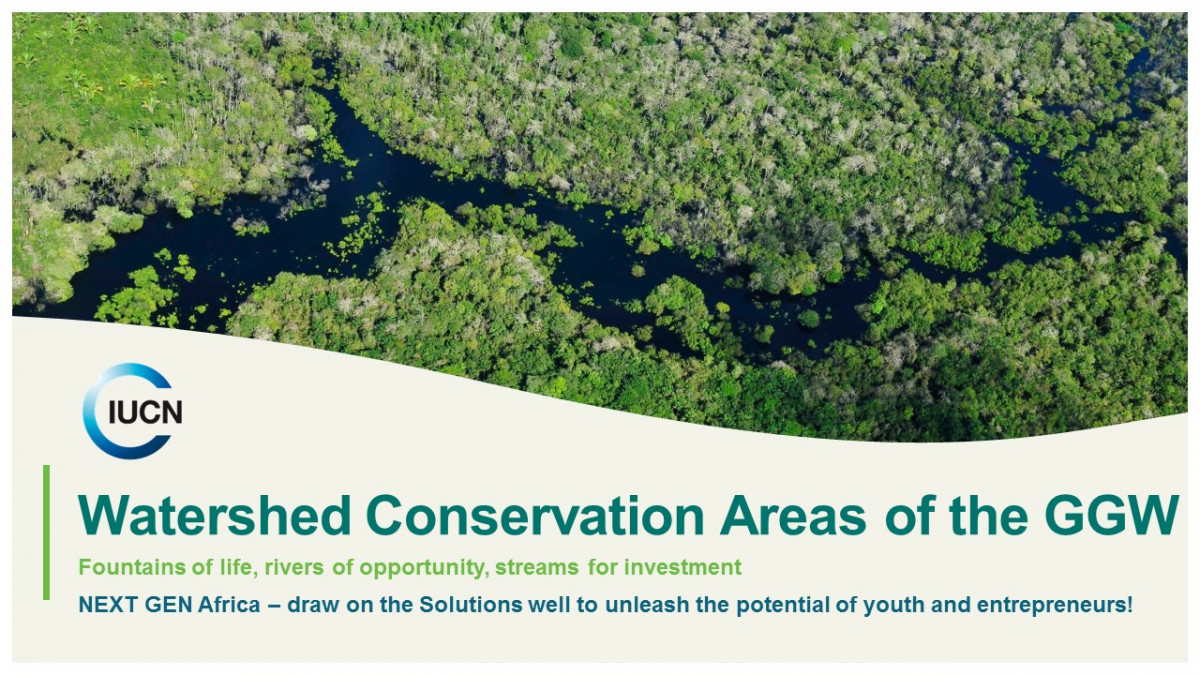Great Green Wetlands – a call for more action on wetland and watershed conservation opportunities in the ‘Great Green Wall’ Initiative
The Sahel region is defined by steady rainfall, river systems and wetlands. It is host to dynamic, vibrant cultures and a myriad forms of governance for area-based conservation and agro-ecological systems. Hundreds of formal protected areas, and even more customarily conserved areas, lace the forests and grasslands of the catchments of the mighty Senegal, Niger and Nile rivers.
The region is rich in biodiversity, cultural heritage and economic opportunity – all based on the integrity of the water, wetlands and watersheds.
The ‘Great Green Wall’ initiative, which is gathering momentum, calls for ecological restoration of the Sahel as an integrated, connected, multi-country system. The focus is on regeneration and recovery.
Yet the dialogue is too often one of desertification, drought, degradation, destabilised governance.

Photo: James Hardcastle / IUCN
In an engaging event on 26th March, as part of the virtual conference on ‘Mobilising Private Investment in the Great Green Wall’, a session led by the IUCN Global Protected and Conserved Areas Programme attempted to weave the wetlands and water back into the narrative.
The session “Next Gen Solutions: African innovation in financing for people and nature” brought together a diverse panel of nature conservation professionals and entrepreneurs. Part of the discussion was on how protected and conserved areas can provide opportunities for investment and entrepreneurship in the Sahel region.
Watch the session on YouTube here:
The case was made strongly that wetlands and watersheds, and the area-based conservation measures that protect them, are vital to the objectives of the Great Green Wall Initiative. Protected areas of the Sahel can provide ‘wells of opportunity’ for investment and sustainable economic initiatives that help secure a sustained flow of ecosystem services and ecological benefits.
Aissa Traoré (IUCN) and Candice Stevens (Wilderness Foundation Africa and Chair of the Sustainable Landscape Finance Coalition) presented case studies from Africa of practical solutions to area-based conservation challenges using financial acumen and innovation. Aissa highlighted the role of youth in all of these solutions, and shared the role of the PANORAMA Solutions platform in collecting, promoting and sharing the success factors.
Candice shared a detailed case study from South Africa, on tax-based financing for protected areas, and offered a simple finance and investment planning framework that governance bodies could explore for their local nature conservation areas.
According to Amadou Bamba Diop, a conservation biologist with the African Development Bank, “Development initiatives and economic growth in the Sahel needs a strong foundation of protected ecosystems, and this can be served by public and private investment in a resilient network of conserved areas in and between the countries of the Great Green Wall”.
However, the public sector capacities and budgets is limited for such support for good governance of protected and conserved areas. Yet IUCN and the International Institute for Environment and Development are embarking on a pioneering exploration of debt-based financing for national and regional systems of nature conservation areas, including rivers and wetlands. “The collaboration will begin with exploratory dialogue and feasibility, before developing more specific partnership with one or more countries in West Africa” remarked Amadou Oumar Touré of IUCN’s West and Central Africa regional office.
Issam Chleuh, an award-winning young African entrepreneur, summed up the discussion on youth: “empower young people in rural areas with technical capacity, digital connectivity, and start-up investment and they will produce miracles.” Stable governance is key, and protected and conserved areas can provide “hubs’ for such innovators to build sustainable business models linked to ecosystem protection and restoration”.
IUCN is now seeking to work with the Great Green Wall Initiative on a multi-country engagement to help secure protected and conserved area network for the rivers, wetlands and watersheds of the Sahel.
Central to this effort will be the IUCN Green List Standard, which describes and guides successful area-based conservation. Several countries in Africa are already using the Standard to guide conservation projects and ensure successful outcomes.
The Green List can be used as the best-in-class measure for impact of investment on ecological integrity and fair and effective management of natural and cultural values in the region. A bespoke ‘Green List Bond’ investment mechanism, in collaboration with Conservation Alpha and the Porini Foundation, will hopefully assist IUCN partners and members to deliver ‘Great Green Living Wetlands’ in the Sahel.
Contact: James Hardcastle, IUCN



